Consul Cluster
This means that Consul manages the cluster formation:
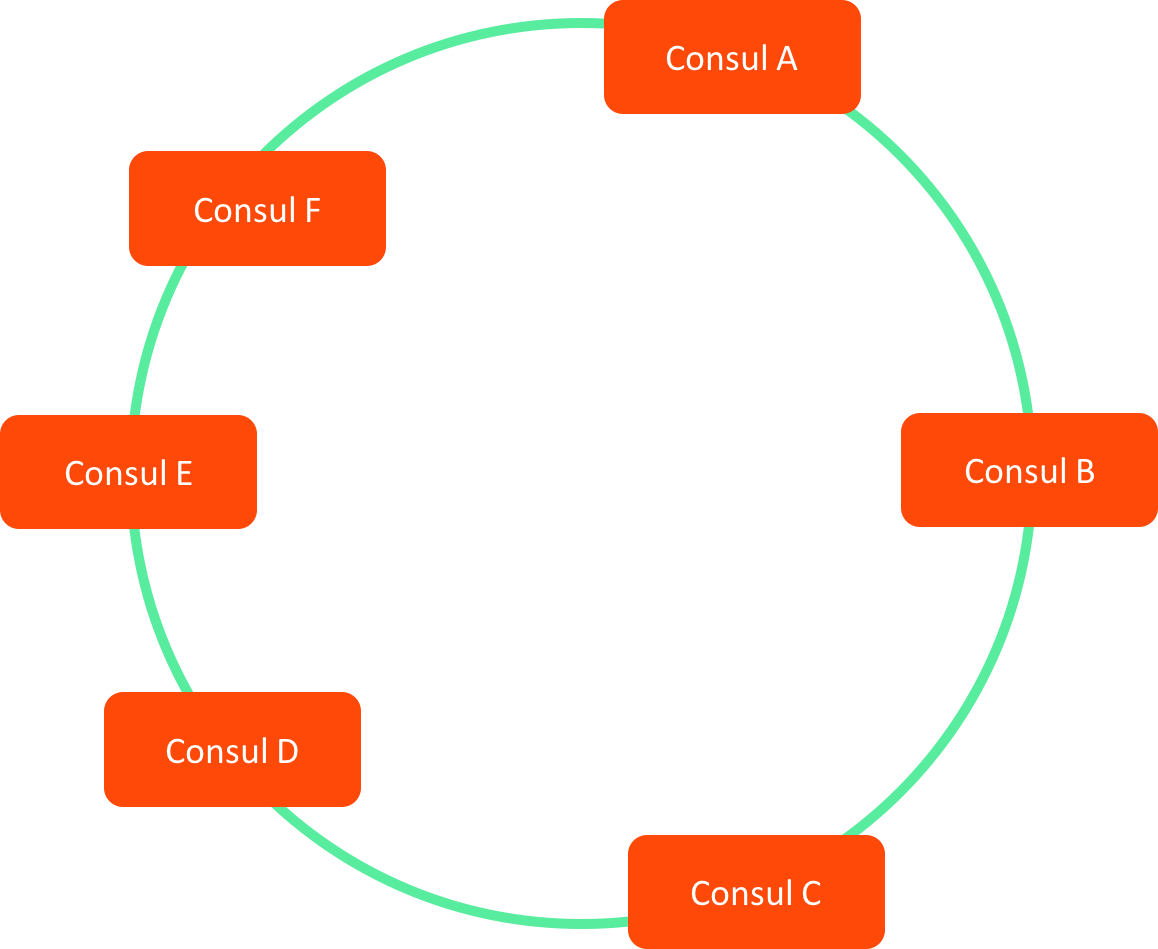
Proto Cluster
On top of this, we attach the Proto.Actor members:
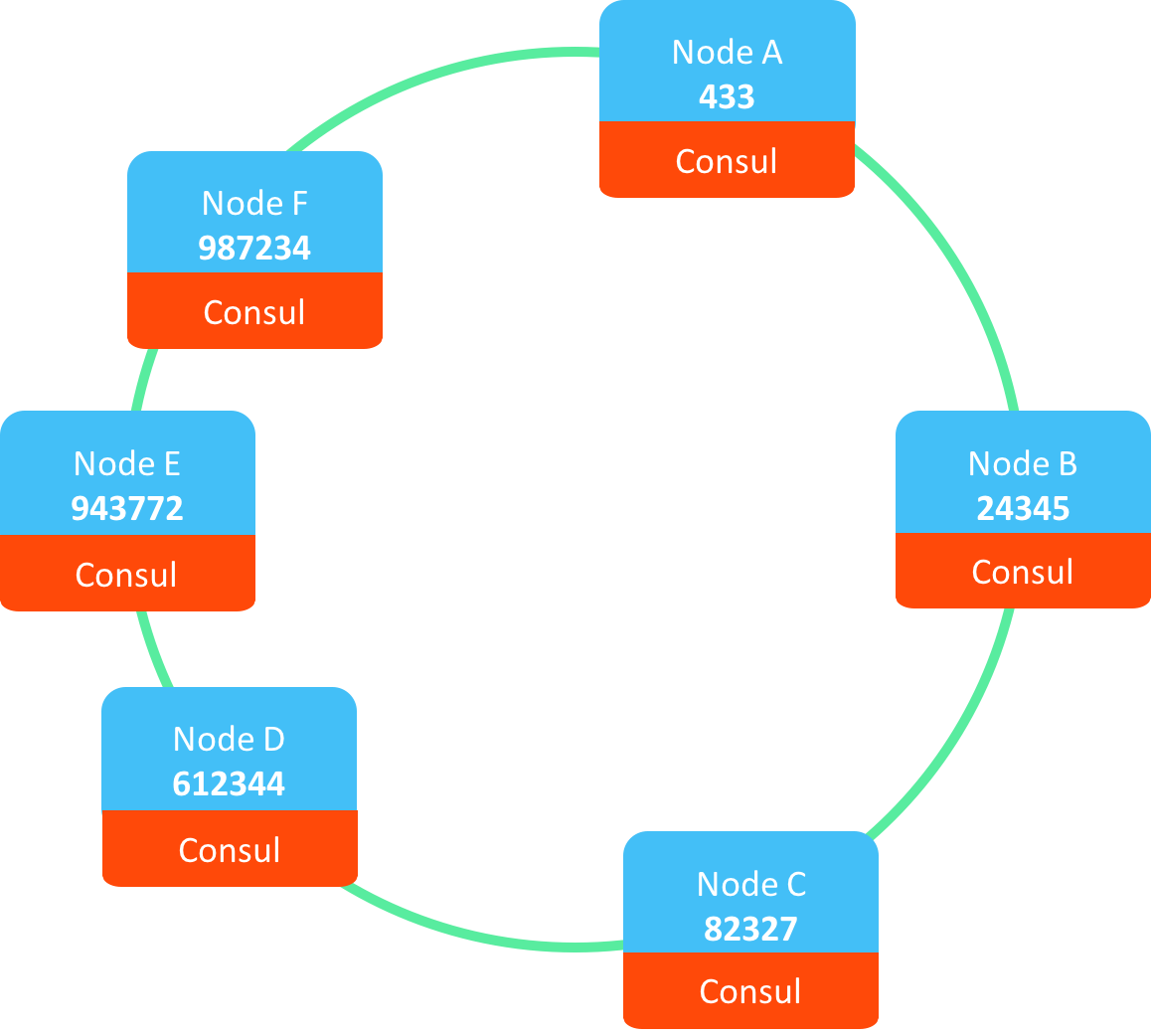
Name to Member affinity
Each member gets a hash-code, this hash-code is based on host + port + unique id of the member.
This means that we now have what is called a “hash ring”. A hash ring can be to locate what member in a cluster should own certain resources.
In this specific case, we want to talk to the actor named “Roger”, which gives the hash-code 989123 (an example only)
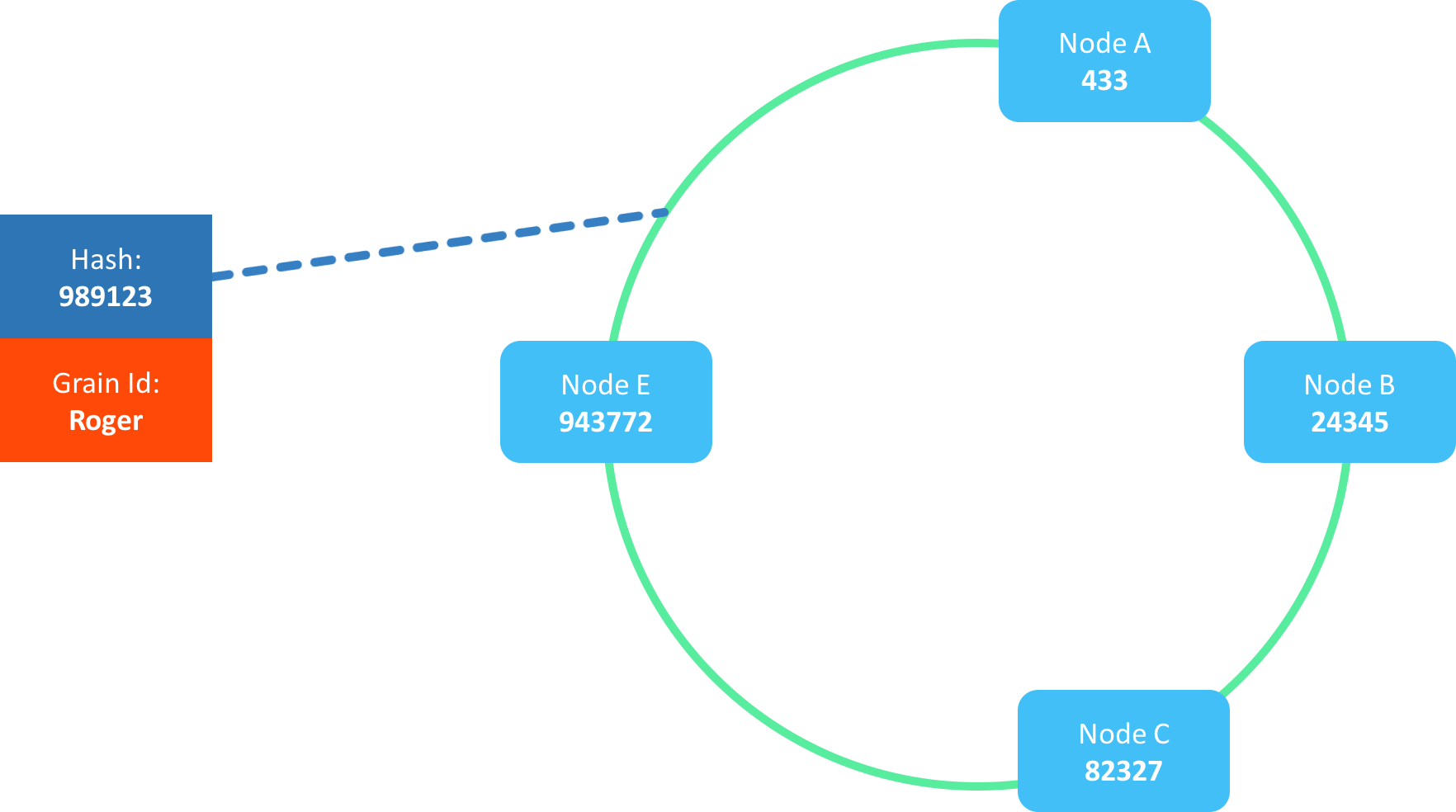
By matching the hash-code against the hash ring, we can see that the member closest to the given actor name is the member “E”.
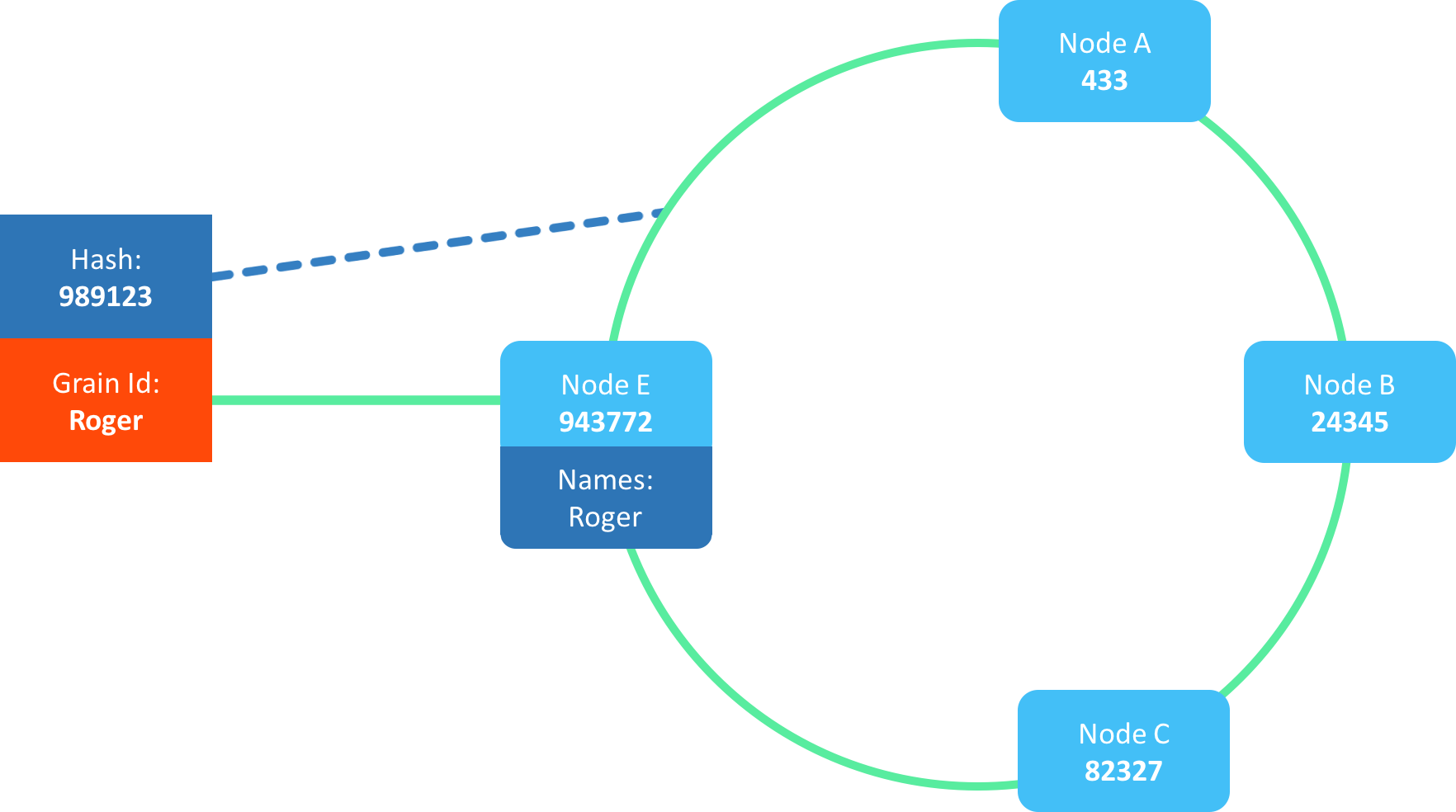
Actor Activations
What is important to understand here is that the member “E” in this case, do not own the actor, just the name “Roger”.
The Actor itself is then spawned or “activated” somewhere in the cluster. This might seem strange at first, why do we need this two-step structure for locating actors?
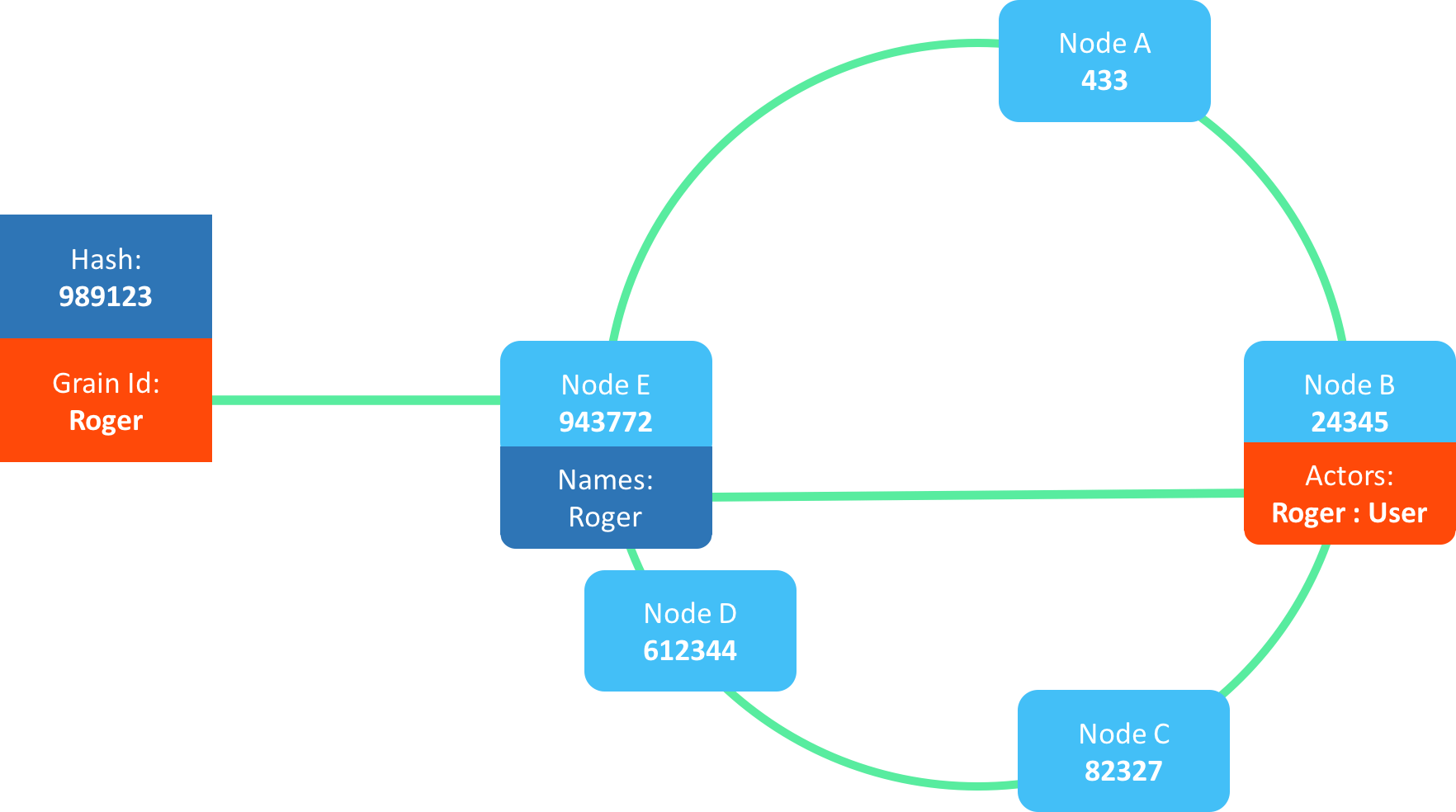
Dealing with Topology Changes
The reason for this is to deal with topology changes. In the case members join or leave the cluster, the topology change, and the shape of the hash ring is altered slightly.
This in turn means that the name of the actor, might now be owned by another node. And by having this two-step structure, we only need to transfer the ownership of the name itself and not the actor and all of its state.
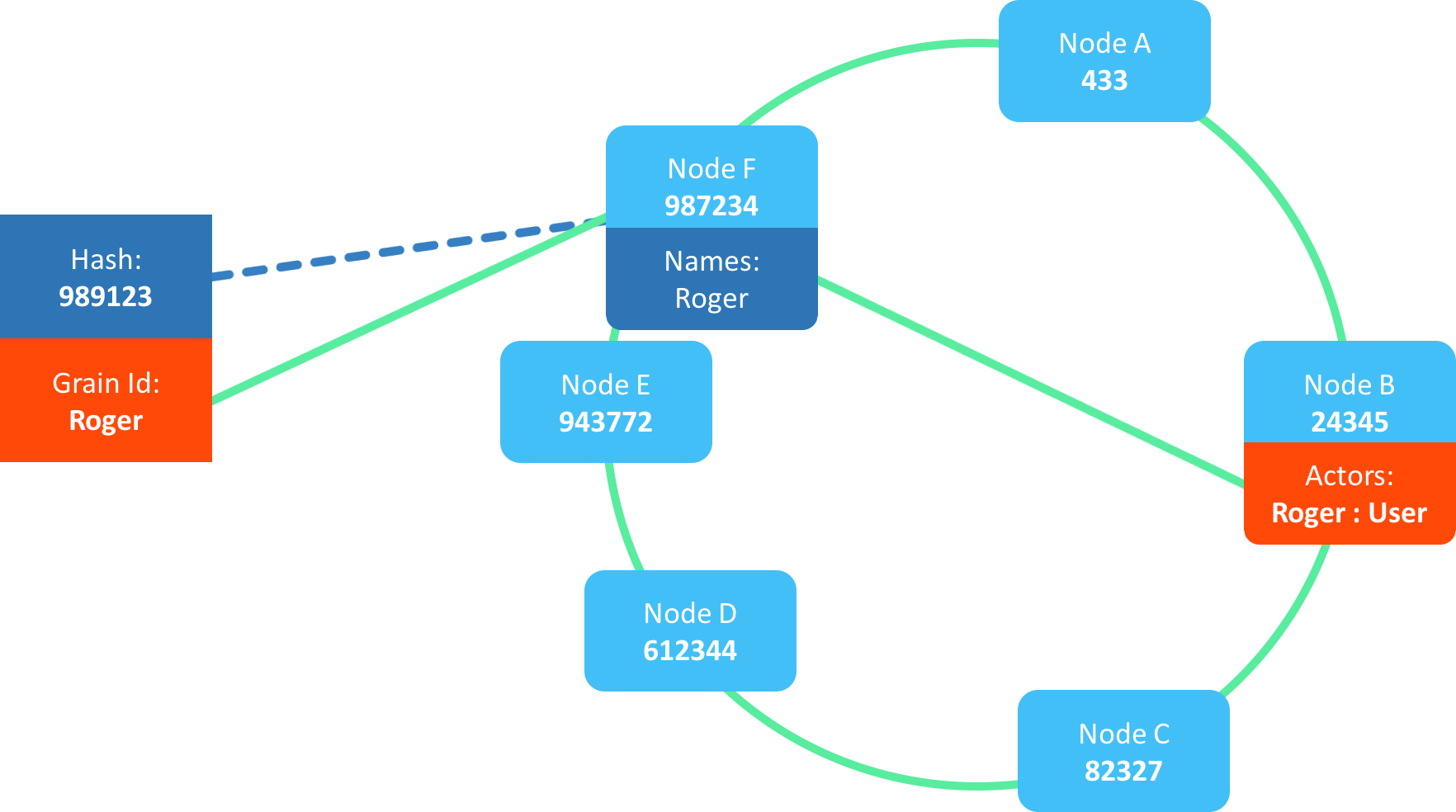
This model makes the cluster extremely robust to failures, only parts of the cluster will fail when a member leaves, and nothing will fail when a member joins the cluster.
In this specific case, even if all members except B and F leaves, the specific actor here is still reachable.
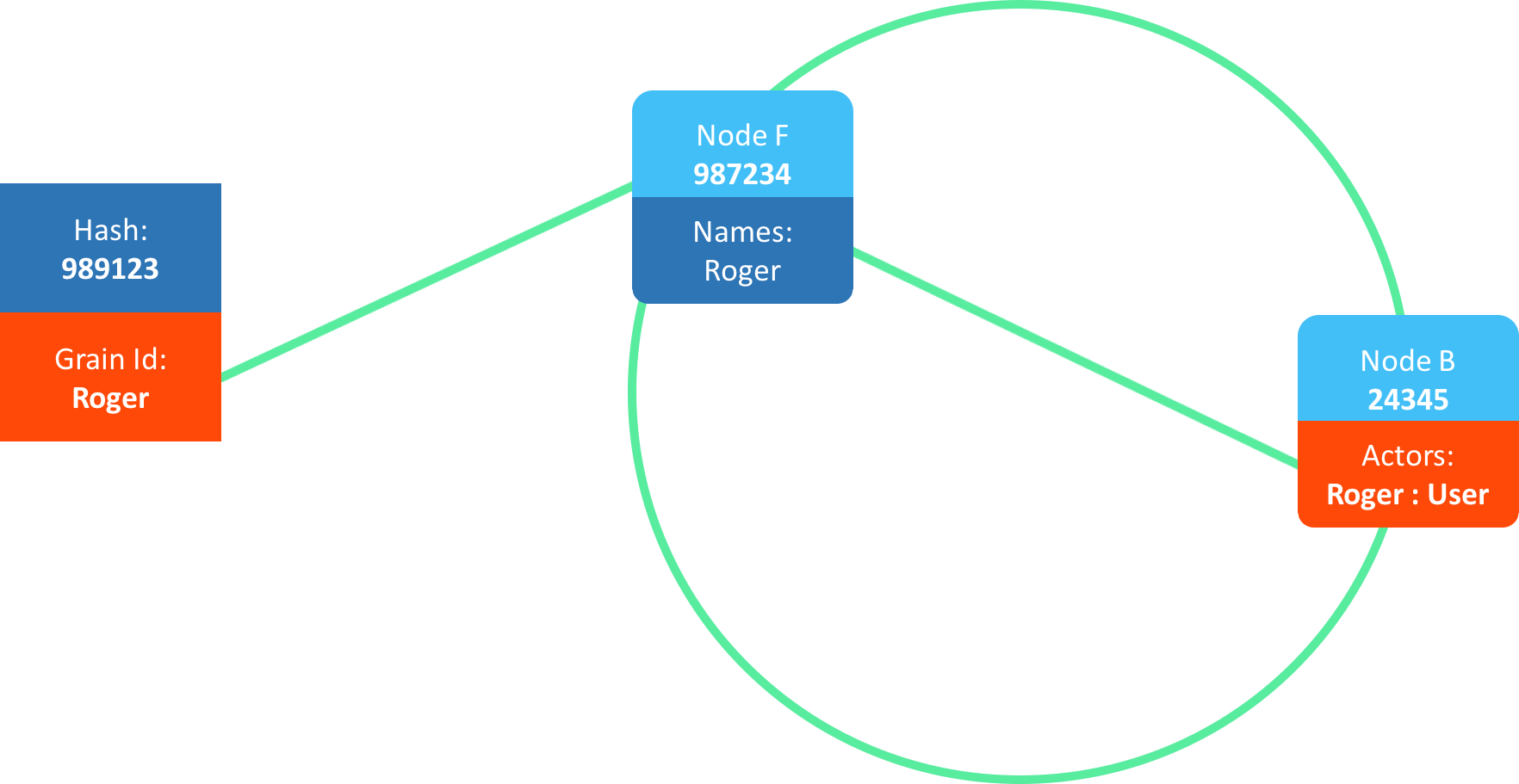
Multiple activations
One drawback of this approach is what is known as Multiple Activations
This can occur when the node that owns the name of an actor unexpectedly leaves the cluster. This leaves the actor activation orphaned somewhere in the cluster.
Should someone now try to call this actor, a new node will be associated with the name, and the actor will be activated again somewhere in the cluster.
This means that we now have two active instances of the same actor, one orphaned and one with a proper name lookup association.
This can lead to issues if you rely on the actor concurrency constraint of one message at any given time.
In many cases, this is not an issue, as the orphaned actor is now unreachable, the name lookup now points to another instance. Thus, no new messages will be sent to it.
In case the orphaned actor have some behavior on its own, chances are that it might cause race conditions between its own state changes and the new activation.
This can be prevented by persisting state in a database with some form of CAS operations, e.g. Couchbase.
In case the two instances change any state, this can now be detected by CAS changes.